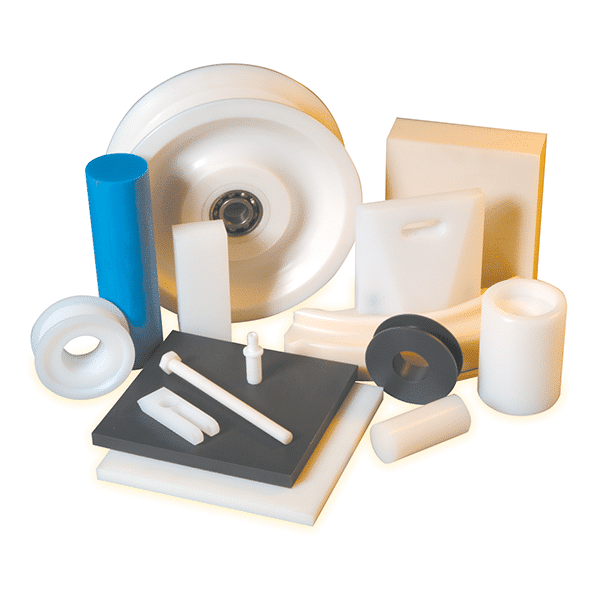The general engineering field uses two basic types of nylon and, whilst their physical properties are broadly similar, individual differences will affect their end use.
nylon 6, in both cast and extruded grades, offers the optimum combination mechanical strength, toughness, damping properties and wear resistance. Its electrical properties and good chemical resistance make it the general purpose grade for most mechanical, construction and maintenance applications.
nylon 66 has a higher mechanical strength, stiffness and toughness than extruded nylon 6, although the unmodified cast nylon 6 grade shows similar characteristics. nylon 66 has better heat, wear and creep resistance, but impact strength and mechanical damping ability are less.
It has superior machining qualities and is well-suited to automatic lathes.
Temperature ranges:
nylon 6 -40°C to +100°C (-40°C to +70°C in water)
nylon 66 -30°C to +100°C (-40°C to +70°C in water)

Benefits
- High mechanical strength and toughness
- Excellent fatigue and wear resistance
- Good sliding properties
- Good mechanical dampening properties
- Good (Nylon 6) and superior (Nylon 66) machining properties
Applications
- Sleeve and slide bearings
- Gears and sprockets
- Support guide wheels
- Conveyor rollers
- Insulators
- Buffer Blocks
Availability
6SA and 6PLA Rod from 5mm to 500mm
66SA Rod from 5mm to 200mm
Tube from 50mm to 500mm
Sheet from 1mm to 100mm
Specification
Rod
Standard lengths: 1000mm, 3000mm
Over 15mm: 3050 x 1220mm
Sheet
Standard sizes: 3000 x 610mm, 2000mm x 1220mm, 2440mm x 1220mm, 3050mm x 1220mm
Tube (on indent only)
Standard lengths: 1000mm, 3000mm

